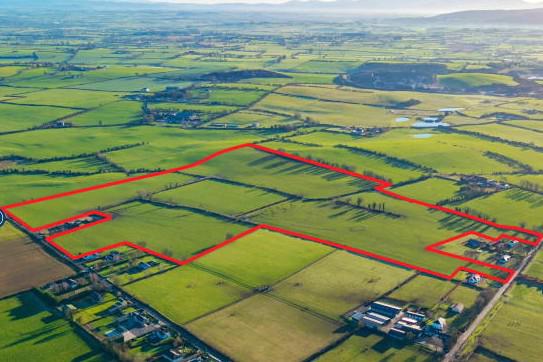Farm transfers are a sensitive topic and need to be planned.
Some farms are fortunate to have a number of possible successors (albeit this can bring its only complications) who would like to continue the farming trade. However, there are some farms with no successors.
Both of these have to be dealt with in different ways but both require planning from a tax perspective and from a personal perspective. Firstly, we will deal with the transferee and reliefs for capital acquisitions tax (CAT).
What are the tax reliefs available on a transfer of a farm?
The most common relief available to transferees is agricultural relief. This relief reduces the taxable value of the property, including land, by 90%. The relief is subject to certain conditions, such as the following:
The property must be agricultural property as defined at the date of the gift or at the date of death, in the case of an inheritance.The transferee must satisfy the 80% agricultural property test on the valuation date after taking the assets.The transferee must either farm the property as an active farmer for a period of not less than six years starting on the valuation date or:Lease the agricultural property to an active farmer for a period of not less than six years starting on the valuation date. The property may be leased to a number of lessees as long as they satisfy the conditions of being an active farmer.Active Farmer Test
To qualify as an active farmer, an individual must farm the land for no less than 50% of his or her normal working time and farm the agricultural property on a commercial basis and with a view to making a profit.
What is the 80% test?
The 80% test is where the individual receiving the agricultural assets must have 80% agricultural assets on the day of the valuation. An example of this would be inheriting agricultural property with a value of €1m, but already owning a house worth €350,000. If this was the case, €1,000,000/€1,350,000 = 74% agricultural assets.
However, if you have a mortgage on this house of €150,000, then the house asset is only worth €200,000, bringing total assets to €1,200,000, therefore, €1,000,000/€1,200,000 = 83.33% and qualifying under the farmer test.
Are there any other reliefs available? Yes,
Consanguinity relief
Consanguinity relief is a stamp duty relief that applies to transfers of farmland where the transferee is directly related to the transferor and the transferee will farm the land for at least six years or lease it for a minimum of six years to a qualifying farmer.
Consanguinity relief reduces the stamp duty on the transfer of land from 7.5% to 1%. This could be a huge saving when you consider the example above of transferring land with a value of €1,000,000, reducing stamp duty from €75,000 to €10,000. A further relief is available for young trained farmers which reduces the stamp duty chargeable to 0%. To claim this relief, you must be under the age of 35, hold a qualification in agriculture, have submitted a business plan to Teagasc, be registered for income tax and be head of the farm holding in question. You must also qualify under the active farmer test as outlined and retain ownership of that land for at least five years from the date of transfer.
What reliefs are available for the transferor?
CAT is discussed for the person receiving the agricultural property, however, it is capital gains tax (CGT) when? we speak in relation to the party transferring the land.
The most common relief available to transferors is retirement relief. Retirement relief is a CGT relief which can be applied in certain circumstances when disposing of a qualifying farm asset. To avail of this relief, you do not actually have to retire! You can sell or transfer qualifying assets and continue to be involved in the business. If you are aged between 55 and 65, a parent can claim full tax relief on the disposal of qualifying farming assets to their child with no cap on the value. However, if you are 66 or older, the relief is restricted to €3m.
What are the conditions for retirement relief?
There are certain conditions which must be met to qualify for retirement relief. These include:
The disposal must be made by an individual (cannot be a company). The qualifying assets must have been held for a minimum of 10 years. The individual must be at least 55 years of age at the time of disposal. The disposal must be of qualifying assets. If the disposal is of a family company shares, the individual must have been working as a director for a minimum of 10 years prior to disposal.When it comes to transferring land, there is a lot to consider from the owner and recipient’s perspective. Retirement relief also relates to the sale of qualifying assets so has a lot of benefits and is worth keeping in mind when making a plan for your farm.
There are many pitfalls when discussing farm transfers so it is important to get professional help on the matter to ensure you are set up for the transfer in the most tax efficient manner possible.
Jerry O’Neill is an ACCA qualified accountant working as an agricultural consultant with Brady Group Agricultural Consultants and Land Agents.
Read more
Family finance: Managing the farm cashflow
Drawings from the farm- How to get a handle on them
Farm transfers are a sensitive topic and need to be planned.
Some farms are fortunate to have a number of possible successors (albeit this can bring its only complications) who would like to continue the farming trade. However, there are some farms with no successors.
Both of these have to be dealt with in different ways but both require planning from a tax perspective and from a personal perspective. Firstly, we will deal with the transferee and reliefs for capital acquisitions tax (CAT).
What are the tax reliefs available on a transfer of a farm?
The most common relief available to transferees is agricultural relief. This relief reduces the taxable value of the property, including land, by 90%. The relief is subject to certain conditions, such as the following:
The property must be agricultural property as defined at the date of the gift or at the date of death, in the case of an inheritance.The transferee must satisfy the 80% agricultural property test on the valuation date after taking the assets.The transferee must either farm the property as an active farmer for a period of not less than six years starting on the valuation date or:Lease the agricultural property to an active farmer for a period of not less than six years starting on the valuation date. The property may be leased to a number of lessees as long as they satisfy the conditions of being an active farmer.Active Farmer Test
To qualify as an active farmer, an individual must farm the land for no less than 50% of his or her normal working time and farm the agricultural property on a commercial basis and with a view to making a profit.
What is the 80% test?
The 80% test is where the individual receiving the agricultural assets must have 80% agricultural assets on the day of the valuation. An example of this would be inheriting agricultural property with a value of €1m, but already owning a house worth €350,000. If this was the case, €1,000,000/€1,350,000 = 74% agricultural assets.
However, if you have a mortgage on this house of €150,000, then the house asset is only worth €200,000, bringing total assets to €1,200,000, therefore, €1,000,000/€1,200,000 = 83.33% and qualifying under the farmer test.
Are there any other reliefs available? Yes,
Consanguinity relief
Consanguinity relief is a stamp duty relief that applies to transfers of farmland where the transferee is directly related to the transferor and the transferee will farm the land for at least six years or lease it for a minimum of six years to a qualifying farmer.
Consanguinity relief reduces the stamp duty on the transfer of land from 7.5% to 1%. This could be a huge saving when you consider the example above of transferring land with a value of €1,000,000, reducing stamp duty from €75,000 to €10,000. A further relief is available for young trained farmers which reduces the stamp duty chargeable to 0%. To claim this relief, you must be under the age of 35, hold a qualification in agriculture, have submitted a business plan to Teagasc, be registered for income tax and be head of the farm holding in question. You must also qualify under the active farmer test as outlined and retain ownership of that land for at least five years from the date of transfer.
What reliefs are available for the transferor?
CAT is discussed for the person receiving the agricultural property, however, it is capital gains tax (CGT) when? we speak in relation to the party transferring the land.
The most common relief available to transferors is retirement relief. Retirement relief is a CGT relief which can be applied in certain circumstances when disposing of a qualifying farm asset. To avail of this relief, you do not actually have to retire! You can sell or transfer qualifying assets and continue to be involved in the business. If you are aged between 55 and 65, a parent can claim full tax relief on the disposal of qualifying farming assets to their child with no cap on the value. However, if you are 66 or older, the relief is restricted to €3m.
What are the conditions for retirement relief?
There are certain conditions which must be met to qualify for retirement relief. These include:
The disposal must be made by an individual (cannot be a company). The qualifying assets must have been held for a minimum of 10 years. The individual must be at least 55 years of age at the time of disposal. The disposal must be of qualifying assets. If the disposal is of a family company shares, the individual must have been working as a director for a minimum of 10 years prior to disposal.When it comes to transferring land, there is a lot to consider from the owner and recipient’s perspective. Retirement relief also relates to the sale of qualifying assets so has a lot of benefits and is worth keeping in mind when making a plan for your farm.
There are many pitfalls when discussing farm transfers so it is important to get professional help on the matter to ensure you are set up for the transfer in the most tax efficient manner possible.
Jerry O’Neill is an ACCA qualified accountant working as an agricultural consultant with Brady Group Agricultural Consultants and Land Agents.
Read more
Family finance: Managing the farm cashflow
Drawings from the farm- How to get a handle on them









SHARING OPTIONS